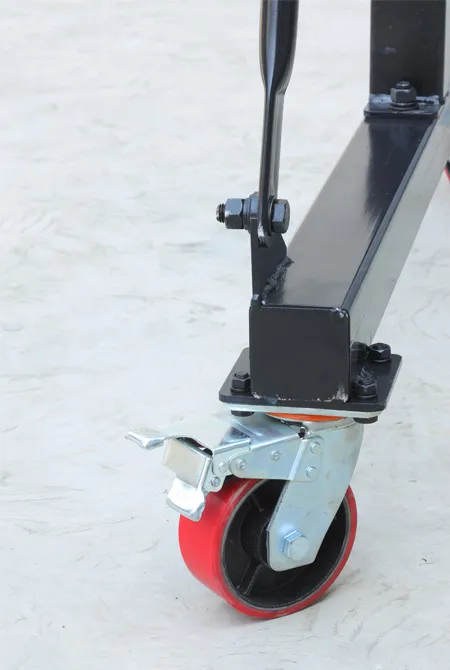permanent magnetic lifter
The Advantages and Applications of Permanent Magnetic Lifters
Permanent magnetic lifters (PML) are innovative tools widely used in various industrial sectors. Their primary function is to lift and move ferromagnetic materials effortlessly, making them essential in manufacturing, construction, and logistics. This article delves into the advantages, operating principles, and diverse applications of permanent magnetic lifters.
Understanding Permanent Magnetic Lifters
Permanent magnetic lifters utilize the principle of magnetism to generate strong lifting capabilities without the need for an external power source. These devices are equipped with permanent magnets made from materials such as neodymium or ferrite, which have the ability to retain their magnetic properties indefinitely. Unlike electromagnets, permanent magnetic lifters do not require electricity to function; this unique feature not only reduces energy costs but also enhances workplace safety by minimizing the risk of power failures during lifting operations.
Advantages of Permanent Magnetic Lifters
1. Energy Efficiency One of the most significant benefits of permanent magnetic lifters is their energy efficiency. They operate without electricity, which reduces operational costs and eliminates the risks associated with electrical failures.
2. Safe and Reliable The magnetic grip is secure, reducing the chances of accidental release during transportation. Permanent magnets can hold heavy loads without the risk of failure, making them highly reliable for lifting operations.
3. Versatility Permanent magnetic lifters are designed to handle various ferrous materials, including steel plates, castings, and other magnetic items. Their adaptability makes them suitable for multiple industries such as automotive, aerospace, and shipbuilding.
4. Low Maintenance With no moving parts and no need for electrical components, permanent magnetic lifters require minimal maintenance. This quality prolongs their lifespan and ensures reliable performance over time.
5. Compact Design The design of magnetic lifters is usually compact and lightweight, allowing for easy handling and transportation. This feature also facilitates storage, making them an ideal solution for space-constrained environments.
permanent magnetic lifter

Applications of Permanent Magnetic Lifters
Permanent magnetic lifters have a wide array of applications across different industries
1. Manufacturing In manufacturing plants, magnetic lifters are used to move steel sheets, coils, and other heavy metal components from one station to another, enhancing productivity and reducing labor costs.
2. Construction In construction sites, these lifters are employed to handle heavy steel beams and panels. They make it easier for workers to position materials accurately, optimizing construction processes and improving safety standards.
3. Warehouse Operations In warehouses and distribution centers, permanent magnetic lifters assist in the quick and efficient handling of heavy goods. They help streamline loading and unloading operations, thereby accelerating the supply chain process.
4. Metal Fabrication The metal fabrication industry benefits significantly from magnetic lifters, which allow for easy manipulation of raw materials during cutting, welding, and assembly processes.
5. Automotive and Aerospace In sectors where precision and safety are critical, such as the automotive and aerospace industries, magnetic lifters enable the secure transportation of parts, reducing the risk of damage and ensuring the smooth flow of production.
Conclusion
In conclusion, permanent magnetic lifters are pivotal tools that enhance efficiency, safety, and productivity across various industrial sectors. Their ability to lift heavy ferromagnetic materials without requiring electricity positions them as a sustainable solution in today’s manufacturing and logistics landscape. As industries continue to innovate and seek ways to improve operations, the demand for permanent magnetic lifters is likely to grow, confirming their status as essential equipment in modern industrial practices. With ongoing advancements in materials and design, these lifters will continue to evolve, offering even more robust solutions to meet the challenges of the future.
-
Unlock Seamless Relocation with Our Heavy Equipment Moving ExpertiseNewsJun.06,2025
-
Unleash Unrivaled Flexibility with Our Adjustable Gantry CraneNewsJun.06,2025
-
Unleash Heavy-Duty Efficiency with Our Industrial Gantry Crane SolutionsNewsJun.06,2025
-
Revolutionize Steel Handling with Our Magnetic Lifter RangeNewsJun.06,2025
-
Master Equipment Mobility with Premium Machinery Mover SolutionsNewsJun.06,2025
-
Elevate Your Material Handling with Magnetic Lifter TechnologyNewsJun.06,2025
-
YS Permanent Lifting Magnets: The Smarter Way to Handle SteelNewsMay.22,2025
